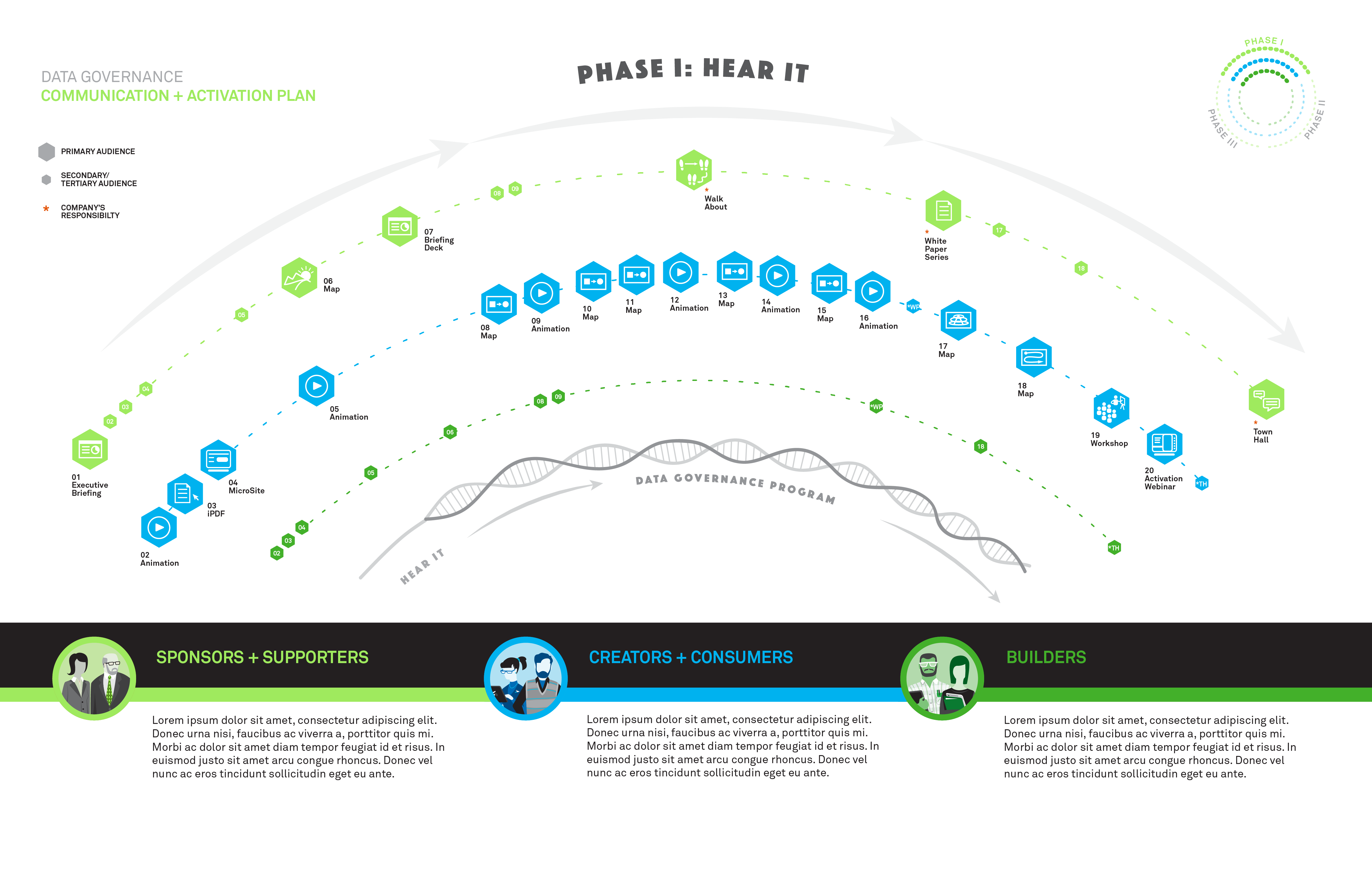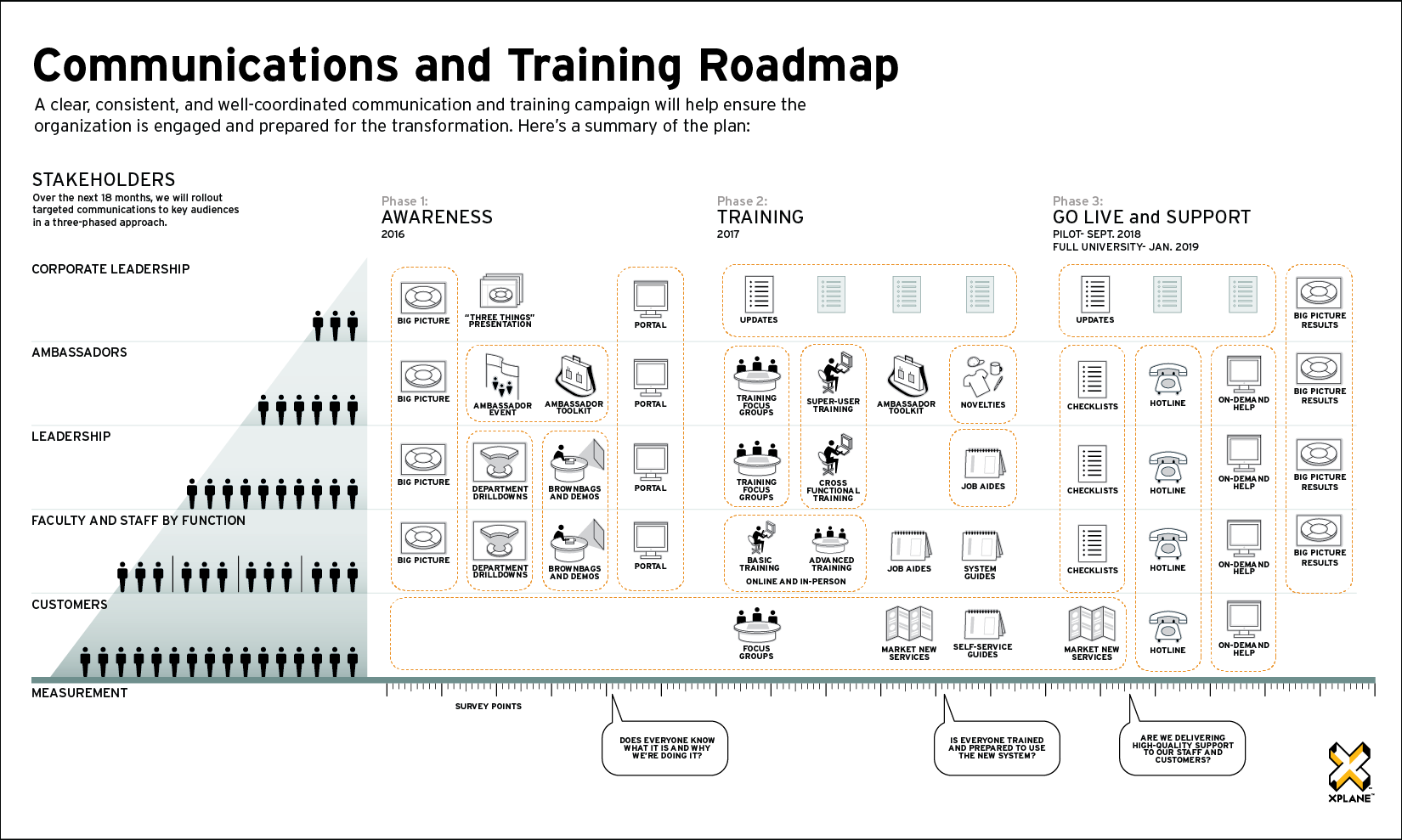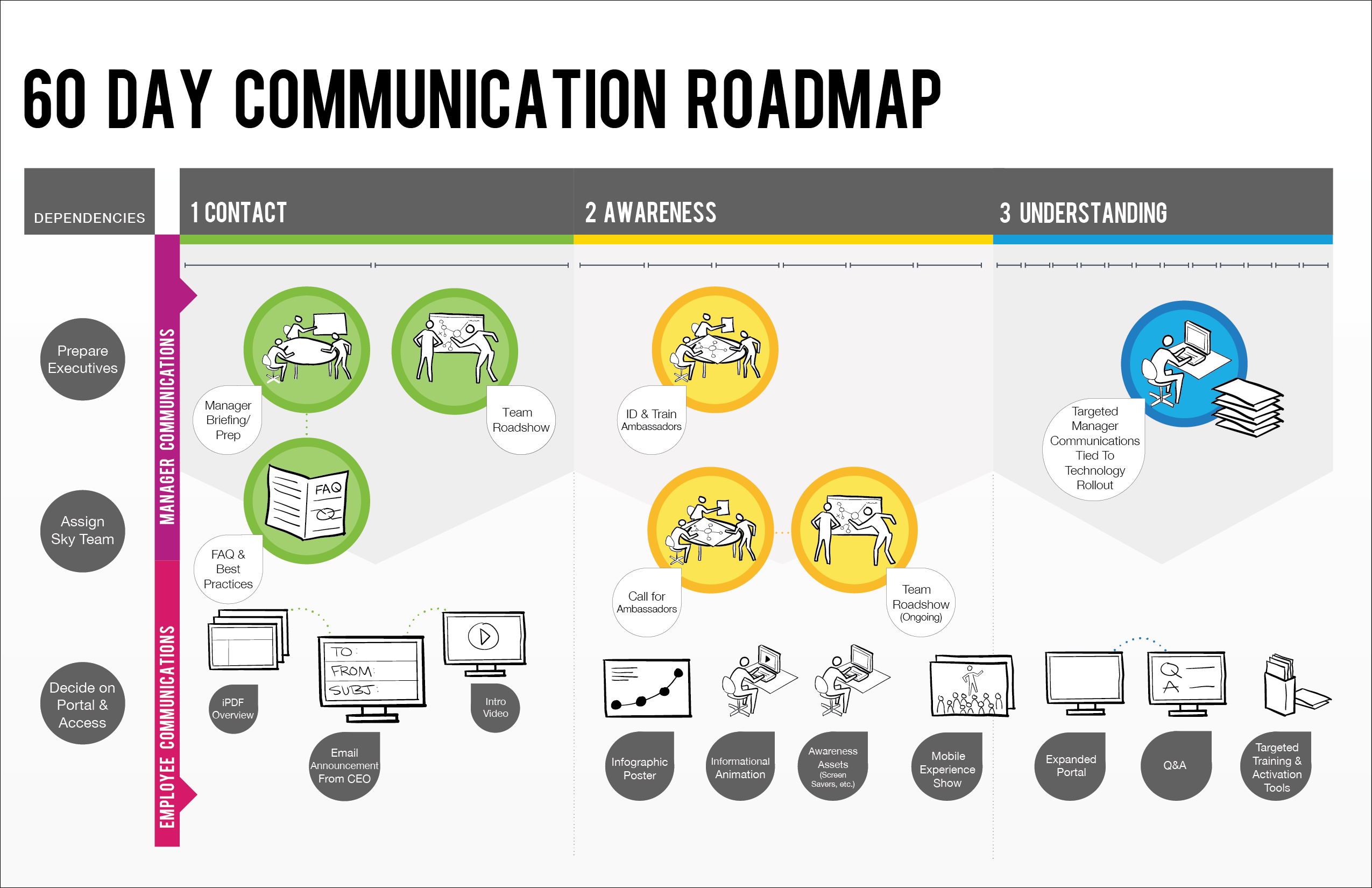For most companies, execution is where strategies go to die. The Harvard Business Review reports that 75 percent of organizations struggle to implement strategy. Mckinsey finds that 70 percent of change programs fail to achieve their goals. And CEO Magazine even says that the number one factor behind 750 bankruptcies in a 25-year period was poor strategy.
As a business leader, you are all too familiar with these challenges and roadblocks that stand in the way of successful strategy rollout. But how do you truly beat these odds inside your organization? Is there a key to successfully implementing the strategy?
Though success varies from organization to organization, we sorted through some of our most effective strategy activation programs to uncover what traits they had in common. Here are five best practices and leadership tools to successfully execute your strategy based on our insights from 24+ years of cross-industry client experience.
1. Know your audience of impact.
Who is impacted by the new strategy? What questions do these audiences need answered to be successful? Whether it’s your management team, your front-line employees, or your customers, your plan for rollout needs to take into account each audience separately. One audience may just need to be aware of the new change while another may need to completely change their day-to-day behavior to accommodate the new strategy. Define who these audiences are, what they need to know to make it come to life, and design the key messages they need to answer their questions.
2. Break the PowerPoint spell.
Go outside of your normal PowerPoint presentation and 30-minute huddle. Brainstorm a wide variety of ways to reach your audience through digital experiences, in-person events, tangible items, and one-on-one coffee talks. Consider the best ways to reach each audience and what hands-on participatory activities you need, in what sequence, to drive engagement and continuously and consistently tell your story of change. (If you need a place to get started, try our Activation Building Blocks worksheet.)
Example of a visual comms roadmap
3. Visualize the journey.
How many streams of work are affected? How many departments are touched by the change? How many processes are impacted? If it can’t be drawn, it can’t be done. Draw out the path that each of your audience will take, their timeline, and where you’ll deploy your tools. As you start to draw the different parts of your organization and how they’re affected by the roll out of the new strategy, you can better understand how they’re all intertwined.
Example of a visual internal communications plan to launch a new strategy
4. Acknowledge if you’re stuck and hire outside help.
“It is refreshing and helpful to have XPLANE’s and others’ perspectives…we couldn’t see the forest for the trees.”
— XPLANE client, post-session
If your teams can’t meet deadlines or show progress, you should consider an outside facilitator to help guide you in the right direction. Bringing in outside experts can introduce your team to new ways of working and help uncover motives, roadblocks, and challenges that you wouldn’t have noticed otherwise. An outsider has no skin in the game and no hand in the internal politics; they bring an unbiased view to your project while pushing for clarity by asking both obvious and tough questions. Plus, they have fresh perspectives, new ideas, and experience with similar types of work to add value, reduce risk, and get you where you need to go, faster.
5. Lead like it matters.
Your employees will believe in change when they see it so it’s important to have living examples of what good looks like. Whether you start small with a group who has mastered the changes and behaviors inherent in the strategy or you engage partners in defining what the walking strategy is, focus on creating observable actions that demonstrate what you want to see in the organization. But don’t stop there: Ditch any outdated metrics and measurements that are no longer aligned to your plan. When you adjust the way you measure your business and the individual performance to ladder up to your new strategy, you’ll get what you track and reward.
Example of a visual strategy implementation plan
See it in action.
See how we helped a leading financial company build a communications strategy that transformed their traditional culture to keep pace with modern regulatory requirements.



